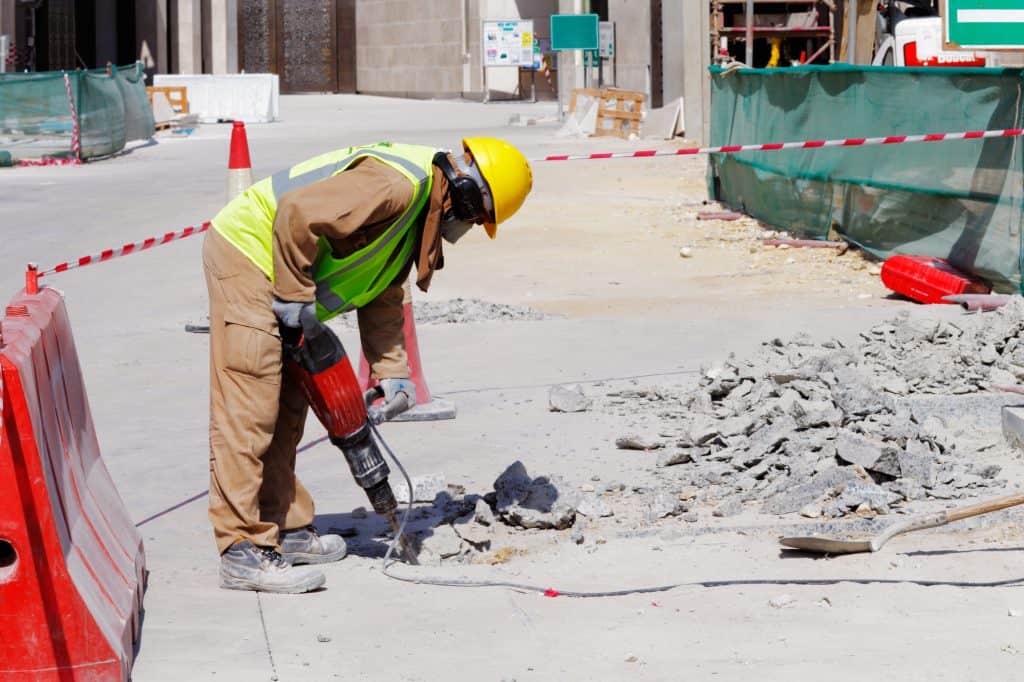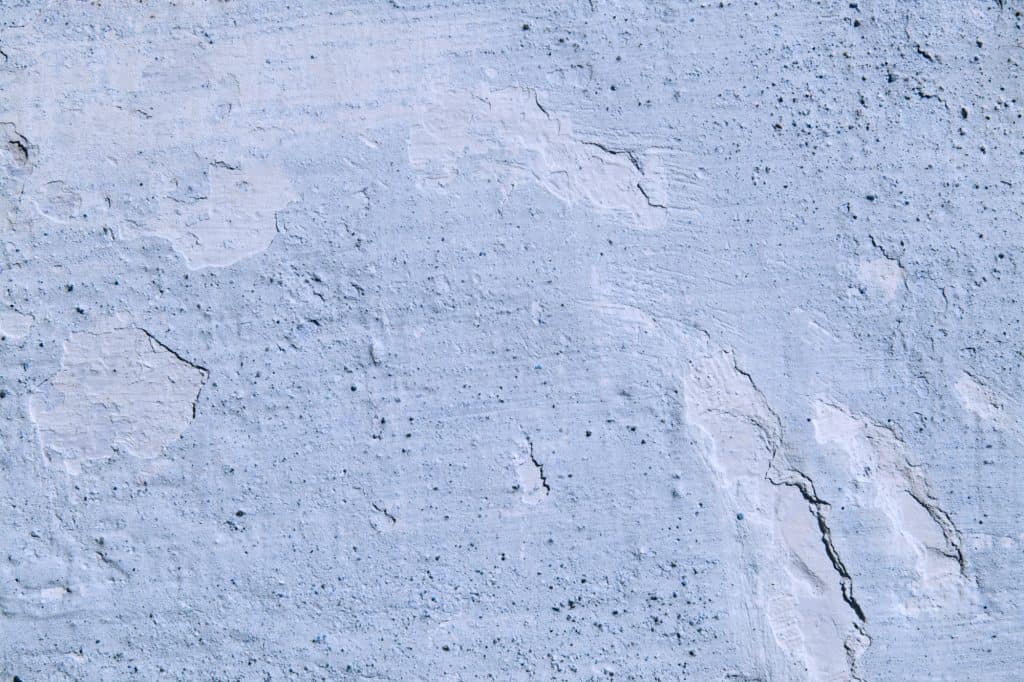Concrete is a construction material consisting of a mixture of Portland cement, sand and stone aggregate. When mixed with water, a green uncured mixture is obtained to be poured into molds or formwork. Concrete is ideal for laying durable surfaces such as highways, airport runways, sidewalks, and driveways.
Freshly laid concrete will have a greenish appearance and cure and harden over time to become a hard light grey substance. The surface of the concrete will change in color depending on the amount of sunlight that falls on it. Concrete surfaces that do not receive a lot of direct sunlight and are often damp can also become green as algae grow on the surface.
Concrete driveways are often discolored by oil leaking from vehicles parked on them or from dust buildup in the porous surface of the concrete.
Can Old And New Concrete Be Color Matched?
Perfectly matching the color of concrete is very difficult to achieve. Contactors promising that they can easily do this are not being honest. If you are pouring a new concrete driveway, path, or patio, it is best to do it simultaneously using a single batch of concrete premix. You can also plan to pour the concrete with different colored surround bands.
The color matching of a master batch of concrete can be done according to a mixing recipe by combining a defined quantity of colorant into the concrete batch to achieve a lighter, darker, or colored shade of concrete. Color matching between batches can be done by using the same mixing ratios.
Concrete pigments are available in various shades and colors, and you can choose how light or dark you want the concrete color to be. Let’s review the best process to follow if you want to color-match concrete surfaces.
If you want all the concrete paving around your house and driveway to be closely color-matched, then it will have to be batched and poured simultaneously. Breaking up old concrete is easy with the right equipment and will allow you to have color-matched concrete, such as with a jack hammer:

Concrete can be tinted to a lighter or darker grey and can even be colored to some earth-tone shades, but it cannot be perfectly color-matched between old and newly laid concrete. If you do not want to break up the old concrete but want to color match it with new concrete, the only option is to paint the surface of the concrete with oil-based color paint.
Paint products have been developed to resurface old concrete driveways to look fresh and vibrant again. Such paint products will ensure a color match between the surface of old and new concrete. Concrete can also be acid washed and stained to change its appearance.
During an acid wash, the top one eight of an inch of the concrete surface is stripped off, revealing the original concrete color. Even with acid washing, a color match between two slabs of concrete poured at different times will not be achieved. Your best option for closely color matched concrete surfaces is painting it or pouring it all simultaneously.
How To Brighten Concrete To Make It Lighter

Titanium Dioxide is a white pigment additive that can be mixed in with the normal concrete mixture to achieve a lighter shade of grey. The alternative is to use aggregate stone and sand that has been made from white stone, such as marble. White cement is another alternative to lighten and whiten the finished concrete appearance.
White concrete is produced in a process similar to grey Portland cement, but the difference is that the grey cement contains the oxides of iron and manganese, whereas the white cement does not contain any metallic oxides. Concrete mixes using white cement and white aggregate can result in white concrete surfaces.
White cement can be darkened to achieve the desired shade of light grey finish, or grey cement mixtures can be made to be lighter by the addition of measured quantities of white aggregate white cement of Titanium Oxide. Specialty concrete mixing companies can prepare a color-matched batch of premixed concrete to your requirements.
If you have a large concrete surfacing project requiring a lightened and color-matched finish, use a specialty concrete mixing supplier. For a small batch on a DIY project, you can experiment on your own to achieve a lighter shade of grey concrete by using white cement and aggregate in your batch.
How To Darken Concrete?

Concrete can appear darker by using Iron Oxide as a black pigment. By adding Carbon Black pigment, the concrete mixture can be further darkened to almost completely black. The ultraviolet solar radiation will bleach the darkened concrete over time, but it will maintain a much darker shade than standard concrete, which will bleach to a sandy color over time.
Concrete mixing professionals best do concrete mixing and tinting for large projects. Concrete batches can be mixed with a color-matched to meet your defined color pallet. The accuracy and consistency of batches can be uniform to give your building or paving project a consistent appearance.
For small projects, you can try your hand at darkening or lightening the concrete batches and define your color batch mixing recipes. To maintain the color fastness of the concrete project, it is recommended to apply a sealer to tie in the color and prevent water penetration from causing pattern variations.
Small Batch DIY Concrete Coloring Method
If you are planning a small concrete pour project for which you want to change the color of the concrete surface, there are two methods. The first method is a dry powder sprinkled evenly over the concrete surface. The second method is the mixing in or a liquid color compound into the concrete batch during mixing.
The dry powder application method is relatively quick and easy to do but only colors the top few millimeters of the concrete slab. The colored surface also tends to be brittle and prone to chipping or cracking. A wide range of colors for the powder color coating are available from Amazon.
After you have poured the concrete and troweled the surface to a smooth, even finish, sprinkle the powder over the damp concrete surface in a fine even layer. Wear gloves to protect the skin of your hands. You should use two pounds of dry powder per square foot of concrete surface.

Using a soft broom, spread the powder evenly over the entire surface of the concrete slab. Reapply the powder in areas of insufficient coverage. Allow the powder and the concrete to set for at least twenty-four hours before rinsing off the surface with water. Use a gentle spray setting on your hose to prevent the soft concrete from being damaged.
If you want to achieve a more vibrant color, you can apply a second layer of powder at a rate of one and a third pounds per square foot. Allow the second layer to cure for another twenty-four hours before gently rinsing off the excess powder.
To ensure a long-lasting effect, apply a sealant to the colored concrete surface once it has completely dried. Use a soft brush or roller and gently apply the sealer to prevent the top pigmented surface from being damaged. The normal gray-colored concrete is below the surface, and any cracks or chips will reveal this.
The most permanent and durable method is to mix the color pigments into the concrete batch during the mixing process. Two bags of concrete mix is sufficient for one load in a concrete mixer. Mix the concrete well while adding water until the mix has attained a nice thick consistency. Do not mix in too much water, as this will weaken your concrete.
Mix the color dye into two quarts of water and stir it well until the dye is evenly dissolved. Add the colored water to the concrete mix and let the mixture rotate until the color is evenly distributed throughout the batch.
If you are making multiple batches and want to achieve a consistent coloring, make sure to use the same quantities of concrete mix and colorant in each batch and keep your mixing time constant. Pour the concrete mixture into your prepared surface and work the concrete to a uniformly smooth surface finish:

Allow your colored concrete to set and cure properly before applying a sealer. It would be best if you let the cured concrete dry out and harden for at least one month before applying a sealant.
Conclusion
Once the concrete has been set and cured for some time, the color will lighten as the slightly acidic rainwater will react with the surface of the concrete. Trying to color match concrete that has not been mixed and poured simultaneously is difficult to achieve.
If you plan to pour new concrete next to older concrete, understand that an exact color match will not be possible. Either break up the old concrete or introduce a planned color difference effect. There are methods to lighten, darken or even introduce vibrant colors to the concrete surfaces, but these need to be well planned to blend in with your design.
If in doubt, break up the old concrete and pour uniformly mixed and blended concrete to achieve your desired effect.
